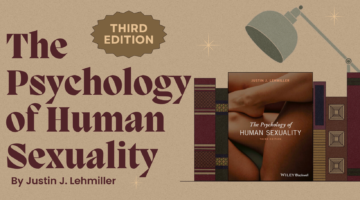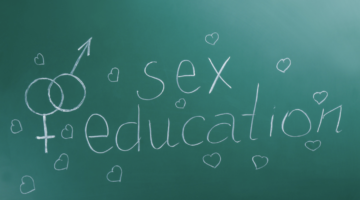What Counts as “Pornography?” It Depends Who You Ask
July 3, 2019 by Justin Lehmiller
As a sex researcher, I’ve read a lot of studies on the subject of pornography. One thing that’s been pretty consistent across most of them is that what counts as “porn” is usually left undefined. In other words, when people are asked about their porn usage habits, it’s generally up to them to determine what counts and what doesn’t.
This means that some people might be thinking about explicit videos they watched on Pornhub or another tube site, others might be thinking about some erotic fiction they read, and yet others might be thinking about flipping through a Sports Illustrated swimsuit issue. Obviously, these are all very different things—and, as researchers, it’s important for us to know what people are counting and what they aren’t when we’re trying to understand the effects of porn.
So how do people define porn? A recent study from the Journal of Sex Research offers some insight.
Approximately 2,100 participants (age 31 on average; 64% of whom identified as male) completed an online survey in which they were given a list of 20 different categories that ranged from explicit sexual media to sexually suggestive content. For each category, participants rated whether it was “definitely not porn” or “definitely porn” on a scale ranging from 0 to 10 (to be clear, the closer the score is to 10, the more people think that the content represents porn).
For eleven of the categories, participants were largely in agreement that they constituted porn, with average ratings between 6-8. Almost all of these categories featured nude men, women, or both who were either engaged in sexual activity or were posing in a suggestive way.
However, also included in this “likely-to-be-porn” category were detailed written descriptions of couples engaged in sex. In other words, it’s not just pictures and videos that count.
For another four of the categories, people rated them between 5-6 on average. These were things that people thought bordered on porn, but they weren’t entirely convinced. These included novels and Hollywood films that included a single explicit sexual scene, as well as images of women with exposed breasts (but not genitals) posing suggestively.
For the last five categories, people rated them as less than 5, meaning that most people didn’t think they were porn. These included images of people in their underwear, swimsuit issues, and television shows with blurred nudity.
That said, there wasn’t 100% agreement on anything. In other words, some people weren’t convinced that videos of a couple having sex were porn, while others were convinced that a swimsuit issue was.
What people counted as porn also depended on their demographic background to some extent. For example, women tended to rate things as more pornographic than men, especially the more explicit depictions of sex. People who were married and/or were more religious gave higher ratings, too, especially to things at the less explicit end of the spectrum (like swimsuit issues).
What all of this tells us is that porn very much appears to be in the eye of the beholder. Different people count very different things as “pornographic.”
This is important because it means that the results of findings across different porn studies might not be directly comparable based on, for example, differences in participant demographics. As a result, we might do well in future research to either define “porn” for participants in these studies, or at least ask them how they define it.
Want to learn more about Sex and Psychology ? Click here for previous articles or follow the blog on Facebook (facebook.com/psychologyofsex), Twitter (@JustinLehmiller), or Reddit (reddit.com/r/psychologyofsex) to receive updates. You can also follow Dr. Lehmiller on YouTube and Instagram.
To learn more about this research, see: Willoughby, B. J., & Busby, D. M. (2016). In the eye of the beholder: Exploring variations in the perceptions of pornography. The Journal of Sex Research, 53(6), 678-688.
Image Credit: iStockphoto
You Might Also Like:

Dr. Justin Lehmiller
Founder & Owner of Sex and PsychologyDr. Justin Lehmiller is a social psychologist and Research Fellow at The Kinsey Institute. He runs the Sex and Psychology blog and podcast and is author of the popular book Tell Me What You Want. Dr. Lehmiller is an award-winning educator, and a prolific researcher who has published more than 50 academic works.
Read full bio >

